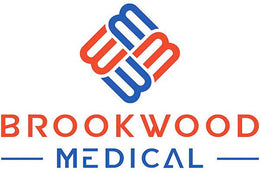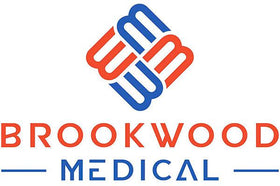The Community’s Role in Promoting Mask-Wearing

Frequently Asked Questions
1. Why is mask-wearing important during public health crises?
2. What are Kids KN95 Face Masks?
3. How can communities promote mask-wearing?
4. What role do local schools play in promoting mask-wearing?
5. How can local businesses support mask-wearing initiatives?
The importance of mask-wearing, especially during public health crises, cannot be overstated. Standard operating procedure has shifted in many communities because of factors like emerging variants of viruses and the resurgence of illnesses that can affect people of all ages. As preventative measures evolve, the role of the community in promoting mask-wearing—specifically, the usage of Kids KN95 Face Masks—has become essential. This article explores how communities come together to encourage mask-wearing and the advantages of this collective effort.
Understanding the Importance of Mask-Wearing
First and foremost, wearing masks helps to reduce the spread of infectious diseases. Research has shown that masks can significantly lower the transmission of viruses, protecting both wearers and those around them. For parents, ensuring that children wear high-quality masks, such as Kids KN95 Face Masks, adds an additional layer of protection. But how can communities rally around the initiative to ensure that mask-wearing becomes a norm?
Community-Based Campaigns and Education
Awareness Through Information
Education is one of the cornerstones of effective public health campaigns. Local organizations, schools, and health departments can collaborate to deliver clear, consistent, and accurate information about the benefits of wearing masks. For instance, distributing flyers or hosting workshops can act as informative platforms to educate families about Kids KN95 Face Masks, instructions for usage, and the necessity of wearing them in various settings.
Utilizing Social Media
Social media platforms can magnify community messages. By creating shareable content that encourages mask-wearing among children, community leaders can effectively reach a large audience. Campaigns that feature testimonials, positive reinforcement, and statistics about mask efficacy can help change public perception and encourage action. People engaging with their peers' posts can cultivate a culture that prioritizes health and safety.
Creating Mask-Wearing Enthusiasm Through Events
Events, ranging from educational fairs to themed "mask days," can stimulate excitement and participation. These gatherings can include fun activities where children can customize their Kids KN95 Face Masks or engage in competitions centered around creativity while wearing masks. When communities turn mask-wearing into an enjoyable experience, children are likely to embrace it rather than resist.
Incentive Programs
Another compelling way communities can promote mask-wearing is through incentive programs. For example, local businesses could offer discounts or rewards to families who show proof of proper mask-wearing at events or public gatherings. This not only boosts mask usage but also fosters a sense of community support and involvement.
Engagement with Local Schools
Partnerships for a Collective Cause
Schools play a pivotal role in promoting health education. By collaborating with local health organizations, schools can implement programs aimed at educating students about the significance of wearing masks, especially Kids KN95 Face Masks. When educators are on board with teaching about public health and safety, children are more likely to take the information seriously and practice what they've learned.
Incorporating Mask-Wearing In Curriculum
Integrating discussions about disease prevention and public health into school curricula can help normalize these topics. By incorporating mask-wearing into subjects like science, health, and even art, students will become more aware of their responsibilities in protecting themselves and their community. Group discussions can also encourage children to vocalize their feelings towards mask-wearing, fostering an environment of empathy and understanding.
Support from Community Leaders and Influencers
Community leaders, including local celebrities and health professionals, can have a significant impact on community perceptions regarding masks. When trusted figures advocate for mask-wearing, especially when discussing Kids KN95 Face Masks, the messages carry weight. Their participation in public service announcements, community events, or social media campaigns can help inspire others to follow suit.
Building Trust Through Transparency
It is crucial for community leaders to be transparent about the reasons behind the mask-wearing recommendations. When communities understand the rationale grounded in science, they are more likely to cooperate. Leader's engaging in open dialogues with the community regarding their concerns about mask-wearing will build trust and promote comprehensive health education.
Celebrating Mask-Wearing Milestones
Recognizing and celebrating community milestones related to mask compliance can bolster enthusiasm and keep the momentum going. Whether it’s achieving a certain percentage of mask use at public events or a month without any COVID-19 cases, celebrating these milestones helps to instill a sense of pride within the community. Additionally, it offers a reminder of the community's collective commitment to health and safety.
Highlighting Success Stories
Sharing success stories from different community groups can inspire others to engage. This can include narratives about individuals or families who have adapted to wearing masks seamlessly, promising their children’s safety through methods like Kids KN95 Face Masks. When people see the positive outcomes tied to these efforts, they are more likely to contribute to the collective goal.
Leveraging Local Businesses for Promotion
Local businesses can be powerful allies in the fight for mask compliance. For example, shops can display signs that encourage customers to wear masks, particularly ones designed for kids like Kids KN95 Face Masks. Additionally, businesses could highlight stories related to their employees or customers who wear masks—creating a supportive environment for families to adopt the practice.
Cross-Promotion of Mask-Wearing and Local Goods
Encouraging local businesses to partner with health organizations for promotional events can further bridge the gap between community support and mask awareness. For instance, involving artisans in creating customized mask designs can merge the cultural fabric of the community with health initiatives, promoting local craftsmanship while advocating for mask protection.
Ongoing Advocacy and Autonomy
Communities can benefit immensely from advocating for continued mask-wearing even when restrictions are lifted. This helps instill behavioral changes that prioritize public health and foster a culture of wellness. When people feel that they have a say in health protocols, their likelihood of adhering to recommendations increases. Autonomy empowers community members to take actionable steps in their health and safety practices.
Encouragement Over Enforcement
The focus should always lean towards encouragement rather than imposing penalties for those who may not wear masks. Communities thrive when support and understanding are at the forefront. By offering help and resources, individuals are more likely to become proactive rather than reactive.
Empowering Generation Z and Younger
Generation Z and younger children are rising as influential voices in their families. They are increasingly tech-savvy and socially aware, making their involvement crucial. When young people advocate for responsible practices like mask-wearing, it can create a more significant impact than adults might realize. Encouragement at home to share messages can empower them to advocate for themselves and their peers.
Creating Peer Networks
By rallying children to form peer networks that promote health initiatives, communities can amplify their mask-wearing campaigns. Children can create social media groups dedicated to sharing tips and resources related to wearing Kids KN95 Face Masks effectively. This empowers them to take actions that help reinforce the habit of embracing masks while enabling them to connect over a shared purpose.
Forever Vigilant: The Future of Mask-Wearing
The call for continued vigilance when it comes to mask-wearing transcends temporary measures. Collective community responsibility can effectively mitigate public health risks. As we navigate the evolving dynamics of viruses and health threats, the role of community in encouraging the usage of Kids KN95 Face Masks and other preventive measures must remain unwavering. Whether through education, events, peer influence, or local business partnerships, every effort counts. A united front in health advocacy not only protects individuals but strengthens bonds within the community.
Moving forward, it’s not just about mask mandates or compliance; it’s about creating lasting habits that prioritize health. By maintaining the momentum of community initiatives, we ensure a safer environment for generations to come. Let us build a resilient future together, one mask at a time!






